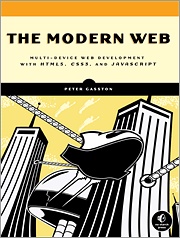The boom in Web-enabled devices has been a huge boon for consumers, who have quickly grown accustomed to instant online access wherever they are, whatever they’re on.
However, it can pose a huge challenge for front-end developers, who now have to design and update sites capable of universal performance in the “Internet-everywhere era.” Industry veteran Peter Gasston has penned a new book to help with the situation: “The Modern Web (No Starch Press, April 2013, 264 pages, $34.95, ISBN 9781593274870). In it he maps out a blueprint for building platforms for the “modern web.”
The book (http://tinyurl.com/bpqnhoh) guides developers and programmers of every skill level through the latest web-platform complexities. In addition to expertly detailing the latest and most important tools of device-agnostic web development, “The Modern Web” provides fundamental instructions for harnessing the powers of HTML5, CSS3, and JavaScript. Peppered with plain-English explanations and practical examples, the book lays out the best techniques, principles, and practices for turning outdated websites into flexible, user-friendly landing pages. Topics covered include how to:
° Plan and code content to display fluidly across multiple devices;
° Design websites that interact with devices using the most up-to-date APIs, including Geolocation, Orientation, and WebStorage;
° Incorporate cross-platform audio and video without plug-ins;
° Make images and graphics scalable on high-resolution devices with SVG;
° Use new HTML5 elements to design friendlier forms.
Gasston has been a London-based web developer for more than 10 years, in both agency and corporate settings. The author of “The Book of CSS3” (No Starch Press, 2011), he has also been published in “Smashing” and “.net” magazines, has contributed to AListApart.com, and was one of the original writers for CSS3.info. When not giving talks on web technology and CSS, he updates his blog, Broken-Links.com .


